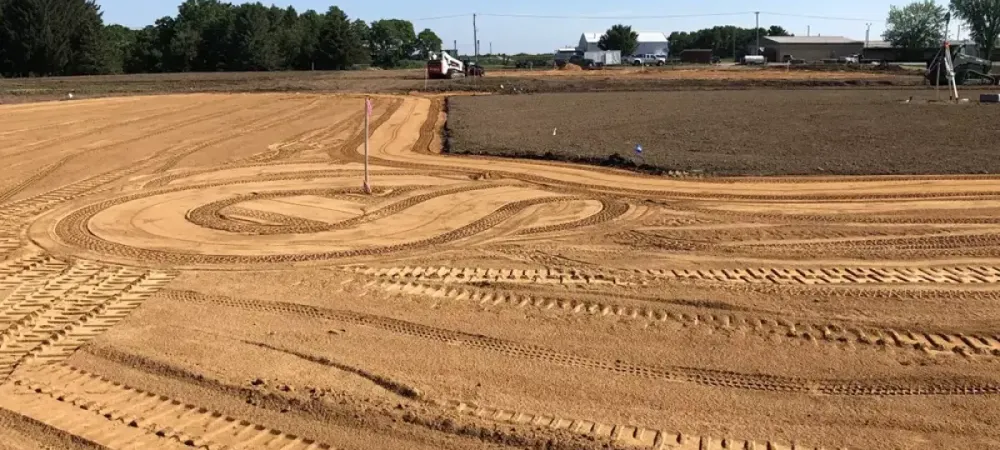
Infield Dirt Mixes Explained: Choosing Top Dressings, Clay Conditioners & Warning Track Blends
A well-constructed infield starts with understanding what makes a great infield dirt mix. The right dirt mix determines how the field plays, drains, and holds up under stress. Whether you manage a baseball diamond, softball field, or multi-sport complex, your infield material needs the right balance of sand, silt, and clay to ensure safety, consistency, and performance.
Most baseball and softball fields start with a 60–20–20 or 70–20–10 ratio of sand, silt, and clay. But that’s just a baseline. The “right” mix for one region may not perform well in another. Temperature swings, rainfall, and local soil pH all influence which materials and conditioners will hold up best.
Top Dressings: The Key to Smooth, Safe Play
Top dressings form the final playing surface layer—usually ¼–½ inch deep. Their purpose is to regulate moisture, prevent compaction, and improve surface playability.
Common top dressing types:
- Calcined Clay: Heated to create a porous structure that absorbs excess moisture and improves drying after rain.
- Vitrified Clay: Denser and more durable, ideal for high-traffic infields that need quick drainage.
- Expanded Shale or Diatomaceous Earth: Lightweight options for fields that stay too wet or compact easily.
Deciding The Right Dressings for Different Regions
- Midwest & Great Lakes: Frequent rain and freeze-thaw cycles make calcined clay a smart choice for balanced moisture control.
- South: High humidity and clay-heavy soils call for vitrified clay or expanded shale, which dry faster and resist sticking.
- Northeast: Cooler, wetter springs benefit from top dressings that warm and dry quickly, such as fine-grade calcined clay.
- West & Southwest: Arid conditions mean water retention is key—calcined clay with a coarser texture helps maintain consistent moisture without over-drying.
Clay Conditioners: Managing Moisture & Compaction
Clay conditioners are mixed into the infield to stabilize the base material. They prevent excessive hardening and help keep moisture distributed evenly through the profile.
The most common types are:
- Calcined Clay Conditioners: Long-lasting and ideal for regions with variable moisture levels. They promote drainage while retaining enough moisture for consistent footing.
- Marl or Red Infield Clay: Popular in warmer climates, but may become sticky or compacted in cooler, wetter Midwest conditions.
- Engineered Blends: Some mixes incorporate polymer-based conditioners for long-term stability and reduced maintenance.
When choosing a conditioner, consider how your field drains. Poorly graded fields or heavy clay soils benefit from materials that improve permeability, while sandier soils need products that help retain moisture.
Warning Track Blends: Function, Traction & Safety
The warning track isn’t just a visual cue—it’s a critical safety and drainage component. The material should feel noticeably different underfoot, giving players a tactile warning before hitting the fence.
Typical composition:
- 70–80% sand for traction and drainage
- 10–20% clay for cohesion
- 5–10% silt or fine aggregate for texture
Red shale or crushed brick mixed with sand performs well, offering freeze resistance and consistent color. Crushed lava rock or vitrified clay mixes provide excellent drainage and color contrast. Blended shale-sand mixes resist erosion and maintain playability through wet springs. Decomposed granite or crushed brick blends handle intense sunlight and heat without fading or compacting.
Soil pH, Drainage & Climate: Why They Matter
Before selecting materials, test your soil.
- Acidic soils (common in the East and Midwest) may benefit from lime amendments or neutral pH top dressings.
- Alkaline soils (common in arid Western regions) can be balanced using gypsum or neutral conditioners.
Proper grading and subsurface drainage ensure materials perform as intended—without ponding, rutting, or cracking during dry periods.
Final Thoughts
Infield materials are never one-size-fits-all. Climate, soil structure, and field use all dictate what works best for long-term performance. The right mix not only enhances playability but also reduces maintenance time and costs.
If you’d rather leave the material selection, testing, and installation to professionals, RZ Sports Turf can help design and build an infield engineered for your regional climate and sport-specific needs. When you contact our local field specialists, they'll analyze your field’s factors and recommend region-specific materials to ensure the infield performs consistently across seasons. They can also handle grading and compaction work to build a stable, safe surface from the ground up.
With expert guidance, you can be confident your field will stay durable, consistent, and ready for play season after season.